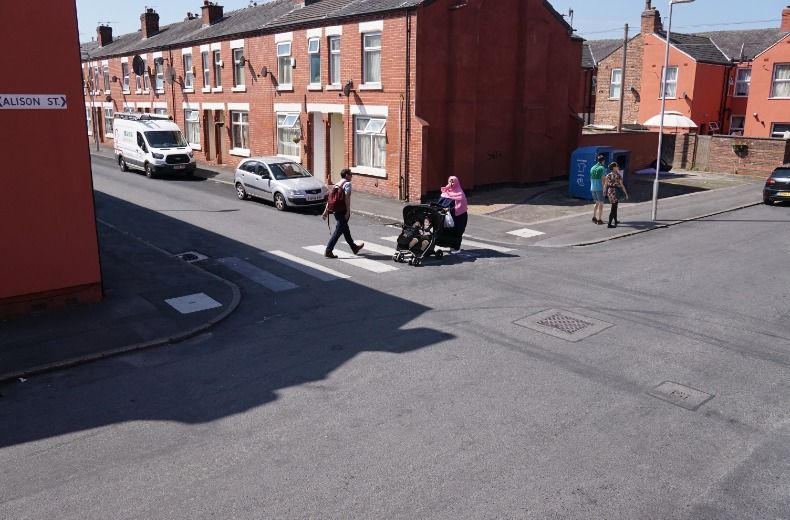A study commissioned in Greater Manchester found that these markings made drivers significantly more likely to stop for pedestrians. Some 70% of motorists stopped for people waiting to cross the road, compared to just 40% without the crossings.
Parallel polling also found three-quarters of parents would be more likely to walk their primary-aged children to school if such markings were in place, leading groups like Living Streets, Guide Dogs and the Ramblers to demand their official introduction.
Zebra crossings in the UK are currently only legally permitted if they have zigzag markings along the road before and after the crossing, and main-wired flashing lights on poles, meaning they can’t be installed at a junction. They typically cost up to £40,000 each.
Greater Manchester transport commissioner Chris Boardman, the former Olympic and Tour de France cyclist, has been attempting to persuade the Department for Transport (DfT) to approve the simpler zebra crossings for more than two years as part of wider plans to boost walking and cycling. The crossings, which cost approximately £1,000 each, are already used in many cities across Europe.
Boardman and mayor of Greater Manchester Andy Burnham commissioned the independent Transport Research Laboratory to carry out limited on-street trials of the alternate zebra crossings – officially known as “non-prescribed zebras” – in Manchester and London. It is hoped other UK cities will follow suit.
The trials found a significant increase in the proportion of drivers who gave way at the crossings – though this was lower when drivers were turning into a side road rather than turning out – and that pedestrians were more likely to feel safe to cross the road.
The pair said they could install hundreds of the crossings in the next 12 months, mainly in lower-traffic residential areas, as part of Greater Manchester’s Bee Network for active travel routes. They have written to transport secretary Grant Shapps to call on his support for non-prescribed zebras.
- Road crossings – zebra, pelican, puffin and toucan crossings
- The school run – doing it safely and efficiently during the pandemic
- A guide to overtaking safely on the road
Andy Burnham said: “Every year in the UK around 2bn trips under one mile are made by car, the equivalent of a 15-minute walk or a five-minute bike ride. Those trips by car are releasing approximately 680,000 tonnes of carbon. We wanted to see if a method used widely across the world could offer us a practical and cost-effective option to make crossing side roads safer and, importantly, feel safer.”
A DfT spokesperson said: “We are aware of the report but will carefully consider its findings before making any further decisions.”
RAC head of roads policy Nicholas Lyes said: “In principle, this would be a positive step towards improving road safety for pedestrians and other vulnerable road users, especially in built-up areas, and would hopefully encourage more people to walk. It should also make drivers take more care at busy junctions and reduce their speed, and so lessen the chances of collisions occurring. If the Government was to proceed, we’d welcome guidance being issued to councils on their use.”
Leave a comment below to let us know how you feel about these new crossing plans.

RAC sale – up to 33% off*
• Roadside cover from £5.29 a month†
• We get to most breakdowns in 60 mins or less
• Our patrols fix 4/5 breakdowns on the spot










